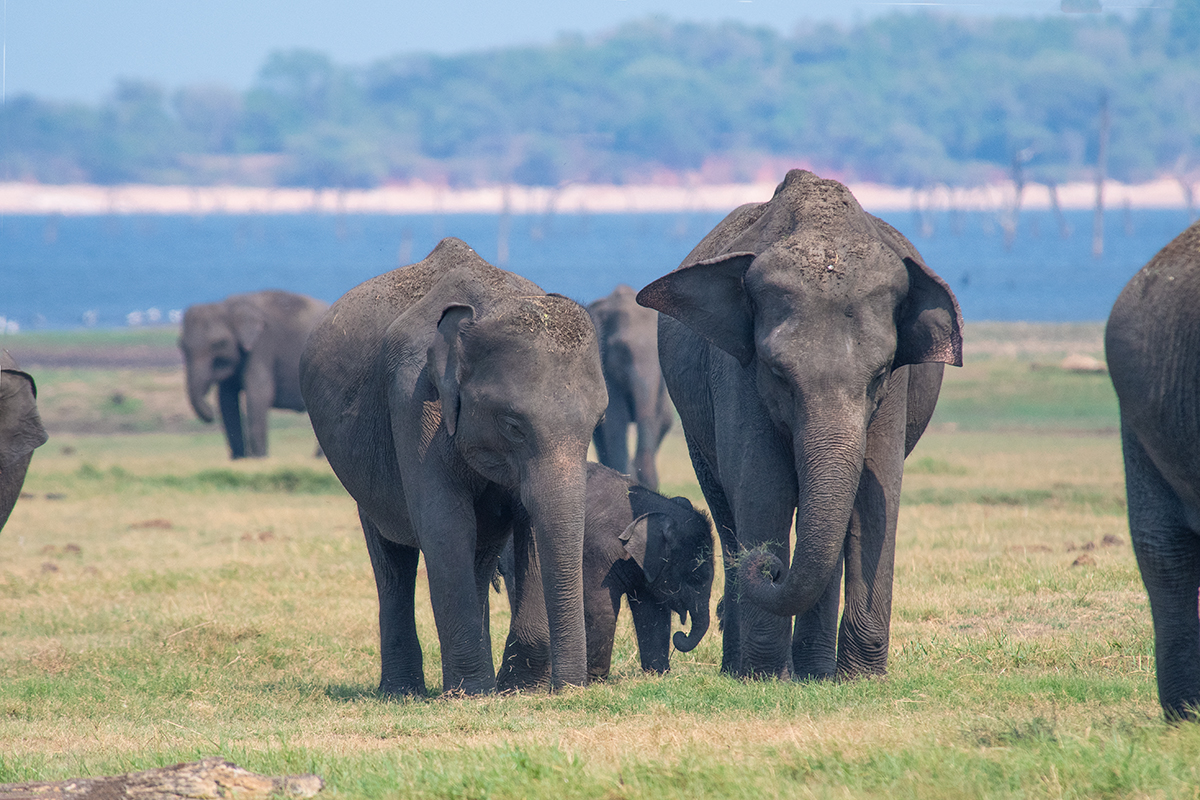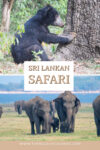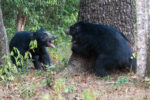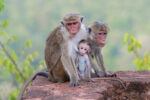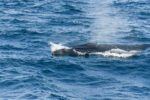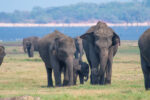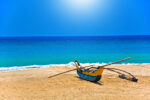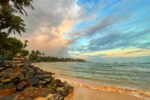Since you are reading this post, you are probably considering a Sri Lankan Safari and wondering what are the best places for seeing wildlife in Sri Lanka.
We spent two weeks driving around Sri Lanka, primarily searching for the country’s four species of wild cats: Rusty-spotted cat – the world’s smallest feline, Fishing cat, Jungle cat, and Sri Lankan leopard – the largest leopard subspecies of earth. During these two weeks, we saw an incredible variety of mammals, birds, and a few reptiles. So I put together this guide to help you plan your Sri Lankan Safari.
Sri Lankan Safari: Know Before You Go
There are a few things you need to know about safari in Sri Lanka:
- Sri Lankan national parks and wildlife are superb
- Sri Lankan national parks are so busy that you will see more tourist jeeps than animals
- Your full-day safari will start very early in the morning, and
- Sri Lankan safaris are expensive. Let me expand on this below.
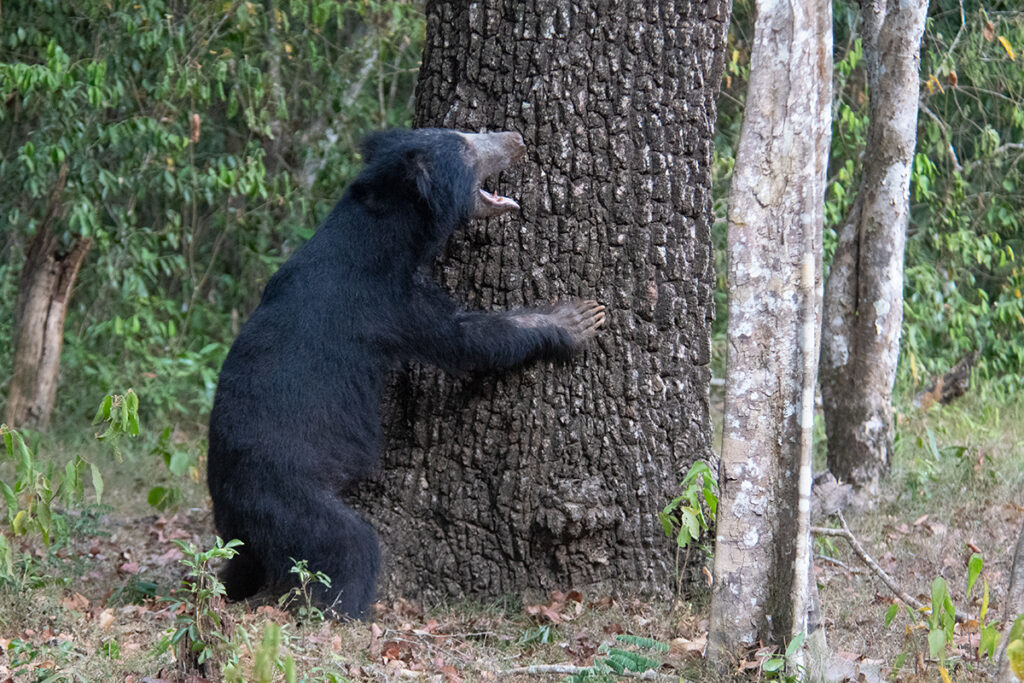
Sri Lanka is home to incredible animals: elephants, leopards, sloth bears, the largest living animal on earth – the Blue whale, and the world’s smallest feline, the Rusty-spotted cat, to name a few.
Yala National Park in the south has the highest concentration of leopards in the world. Minneria and Kadulla National Parks in Central Sri Lanka are the sites of the annual Elephant Gathering – a wildlife spectacle of hundreds of elephants in one place. Wilpattu, in the northwest, is the best place to see sloth bears.
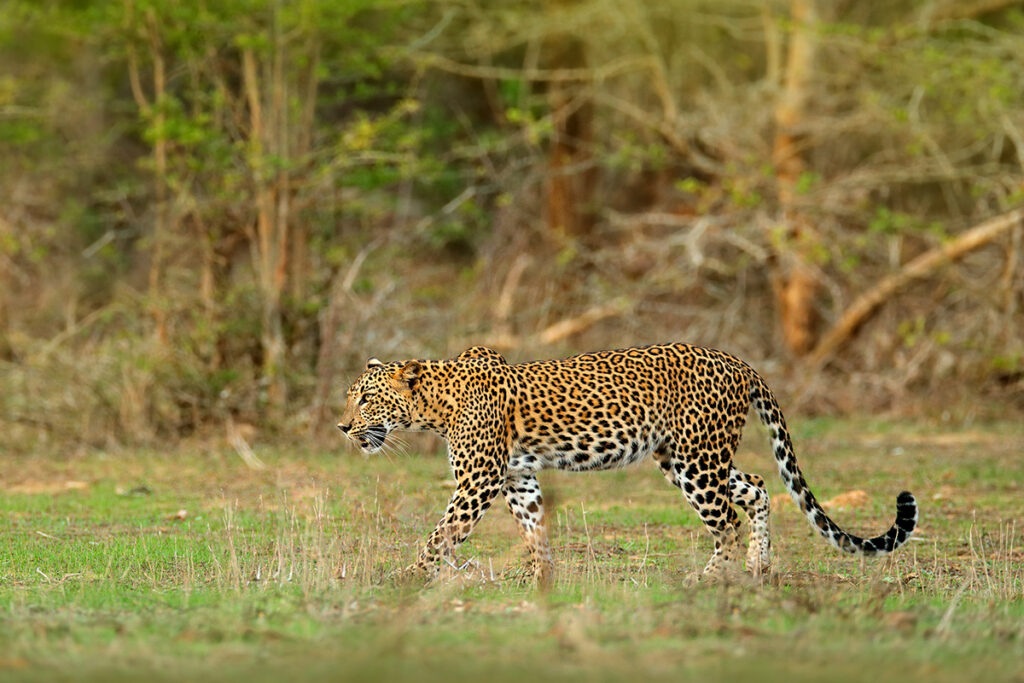
However, popular national parks in Sri Lanka get so busy that the safari experience can be more frustrating than rewarding. Yala and Udawalawe national parks in particular have several hundred jeeps entering each morning and it can take hours even just to enter the park.
When a rare animal like a leopard or a sloth bear is sighted, the jeep drivers tell all other drivers where the animal is and within minutes dozens upon dozens of jeeps arrive and the experience turns into pure chaos with drivers cutting in front of one another, and constantly moving, relentlessly chasing the animal.
To have a pleasant experience in these national parks, ask your driver not to follow other cars and leave your animal spotting to your luck, as it should be on a safari.
Can you do Sri Lankan Safari Independently?
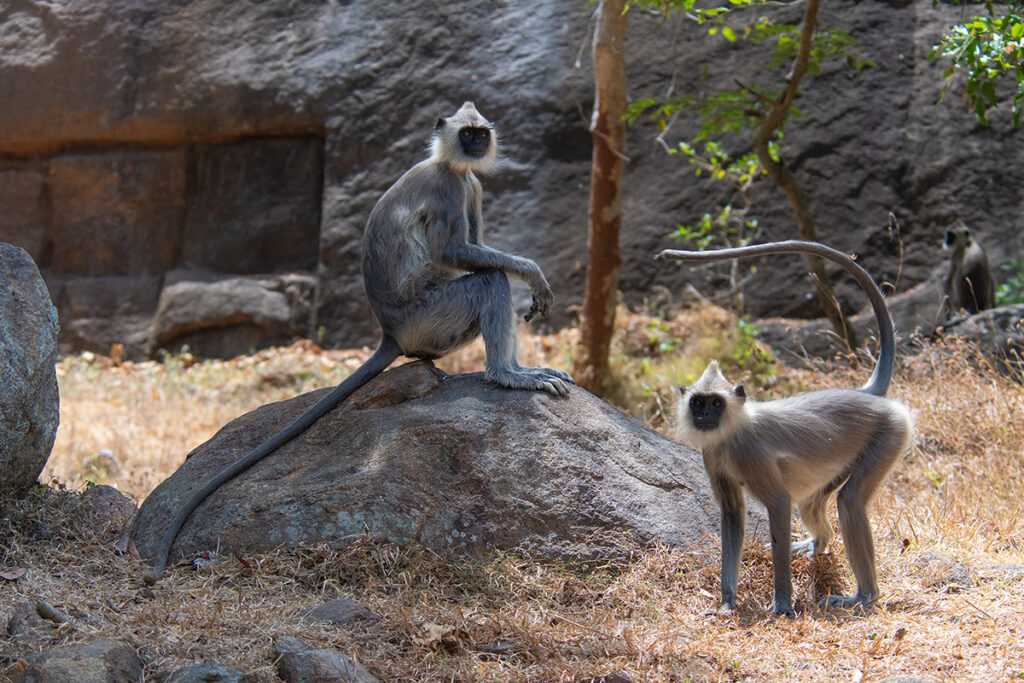
The short answer is: to an extent. You can hire a car and drive from one national park or wildlife-rich area to the next. But to get inside the national parks you will need to book a jeep and a guide.
We rented a car and did a lot of night drives in the countryside and saw as many animals outside of the national parks as we did within them.
Is Sri Lankan safari expensive?
Yes. The Sri Lankan government has recently increased entry fees to all national parks to $30 for foreign nationals. Plus, government taxes. Plus, the jeep & the driver. If you are travelling alone, you’ll be paying around 50,000 rupees ($170 USD) or more. As a couple, you’ll share the costs of the jeep but will have to pay more in entry fees.
One thing to try is to ask your accommodation provider if they can arrange for you to join a safari with someone else. We were able to share our safari in Kadulla National Park with another couple. This was entirely due to the fantastic organizational skills of our host Hiru at Lahiru Homestay.
Can you book an organized safari in Sri Lanka?
Yes. Unless you are interested specifically in nocturnal mammals, like we were, you can book an organized safari and have all the logistics of travelling between the national parks taken care of for you. Public transport in Sri Lanka is not great and it can take up to 4 buses (and 12 hours) to travel from Wilpattu to Yala.
If you have the time to maximise your wildlife sporting opportunities, consider 2-3 weeks in Sri Lanka. This 19-day tour includes most of the national parks plus some not-to-be-missed activities, like climbing Sigiriya rock and visiting Galle Fort.
If you don’t have the luxury of 3 weeks, you can take a shorter, condensed version with the 9-day tour.
And if you have a specialist interest, like felids, or other nocturnal species, you already know that these tours are not cheap. The best team on the market is the Bird and Wildlife Team. The downside is that they are very expensive. Contact them directly with any queries.
Now that we got most of the logistical considerations out of the way, let’s jump straight into wildlife-watching opportunities in Sri Lanka.
Wilpattu National Park
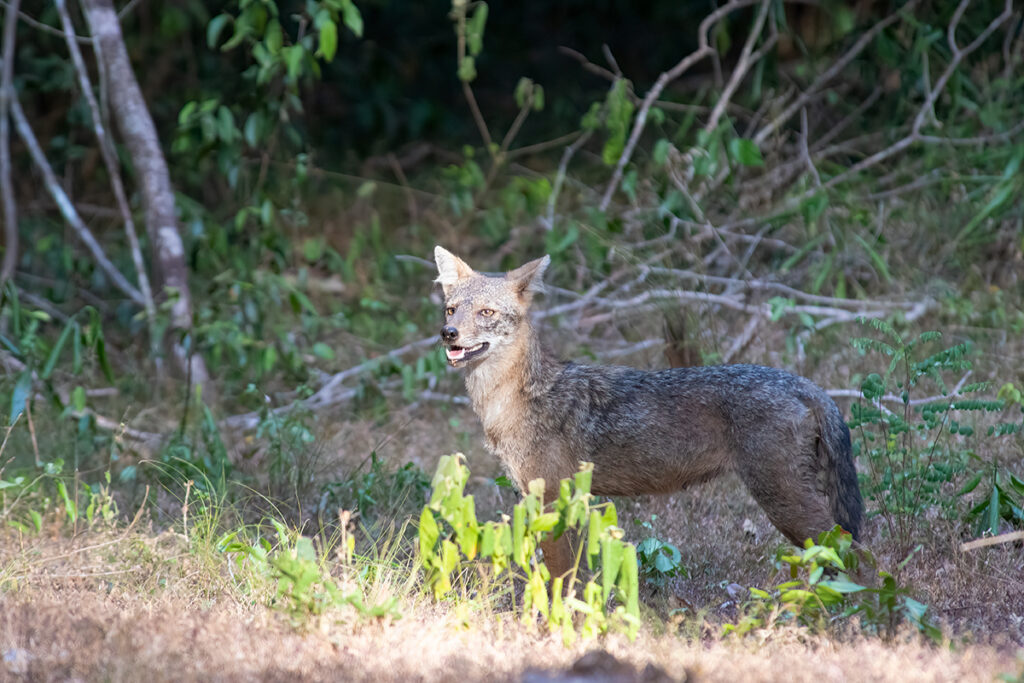
Wilpattu is our favourite national park in Sri Lanka. Lying in the northwest of the island just under 40km from Anuradhapura, it is less crowded than most parks in south and central Sri Lanka.
Wilpattu is known as the best place to see sloth bears in Sri Lanka, but it is also a great place to see Sri Lankan leopards, golden jackals, painted storks, hornbills, and many more species of Sri Lankan wildlife. You can pre-book your Wilpattu safari in advance. You can even book the Wilpattu safari from Negombo if you don’t wish to travel to Wilpattu independently.
Wilpattu Safari
Our full-day safari in Wilpattu National Park started with 5.45 am pick up for a short drive to the park. For the 3 of us, it cost USD $210, including a packed lunch. We arrived at the park gate just before 6 am and were the 4th car in the queue to enter (the park opens at (6.15 am).
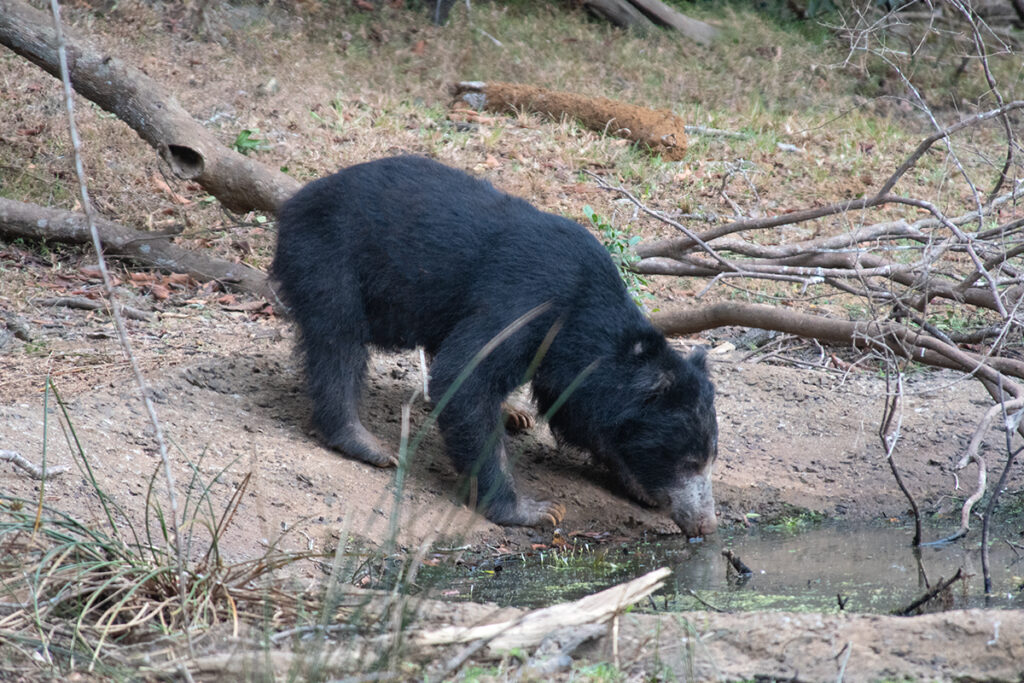
Minutes into our safari, we came across a Sloth bear heading to the small lake for a drink. He took a long drink from the pond and as he was just about to saunter into the forest another sloth bear appeared. Another male. A younger individual by the looks of it.
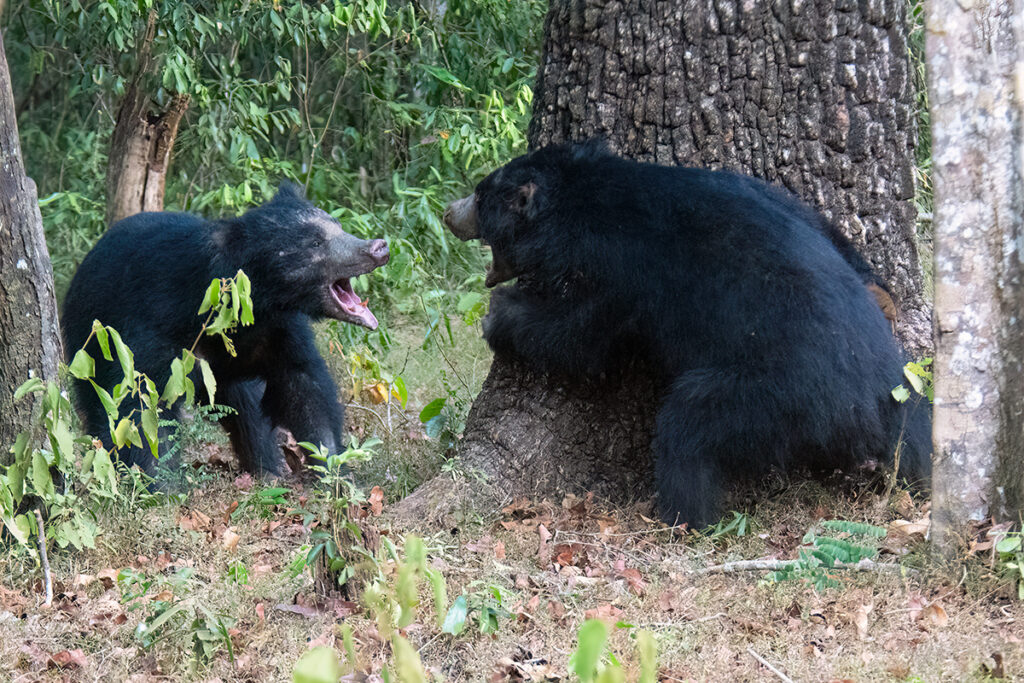
By now dozens of jeeps were gathered around the bears in a constantly shifting milieu as each driver tried to take an advantageous position for his guests. Thankfully, the bears were too intent on sorting out their differences to be bothered by the jeeps.
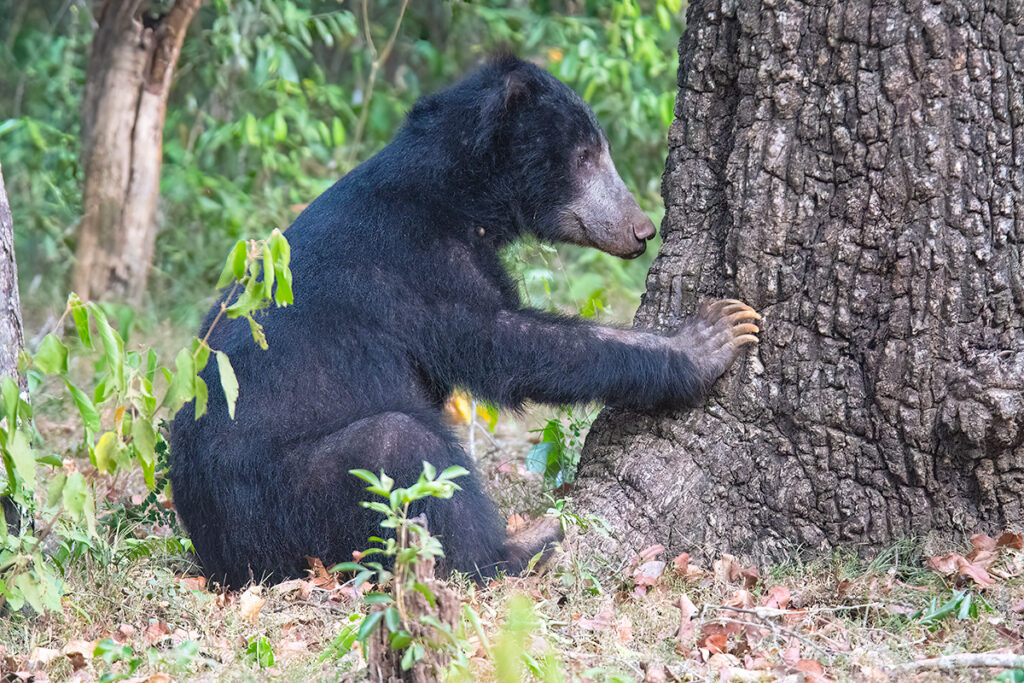
The older bear chased the younger one away and they had a very vocal squabble, squeezing somewhat like old ladies, until the younger bear finally retreated into the forest.
The rest of our 12-hour safari proceeded in a much less dramatic manner, yet we saw an incredible variety of animals. I was desperately hoping to see a leopard. Sri Lankan leopards are the largest subspecies of leopards on earth. But we also didn’t want to be part of the chaotic crowds that gather around leopards and asked our driver not to follow other cars but to take any other road.
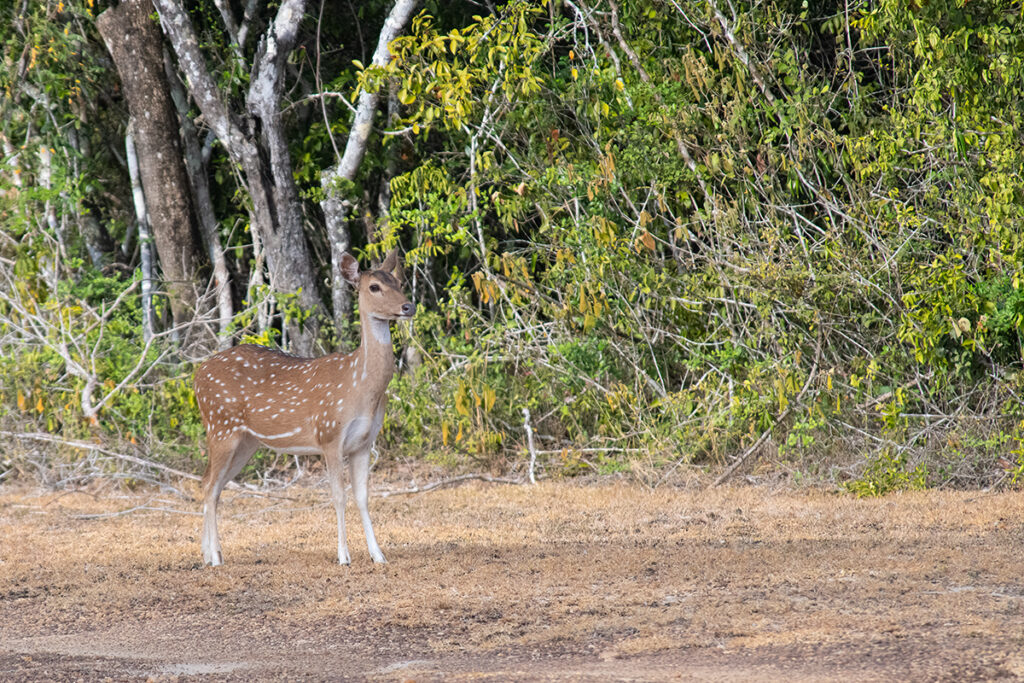
In the end, we still followed a tip from another driver to find a leopard, but much further from the centre of the park, so there were only a few jeeps around the sight. Our first leopard was quite distant. It was an adult male resting under a tree on the other side of a dried-out lake.
The second leopard we spotted was a young female, and she was much closer. But she chose such a think patch of bushes to rest in that you could walk right by her and never notice her there.
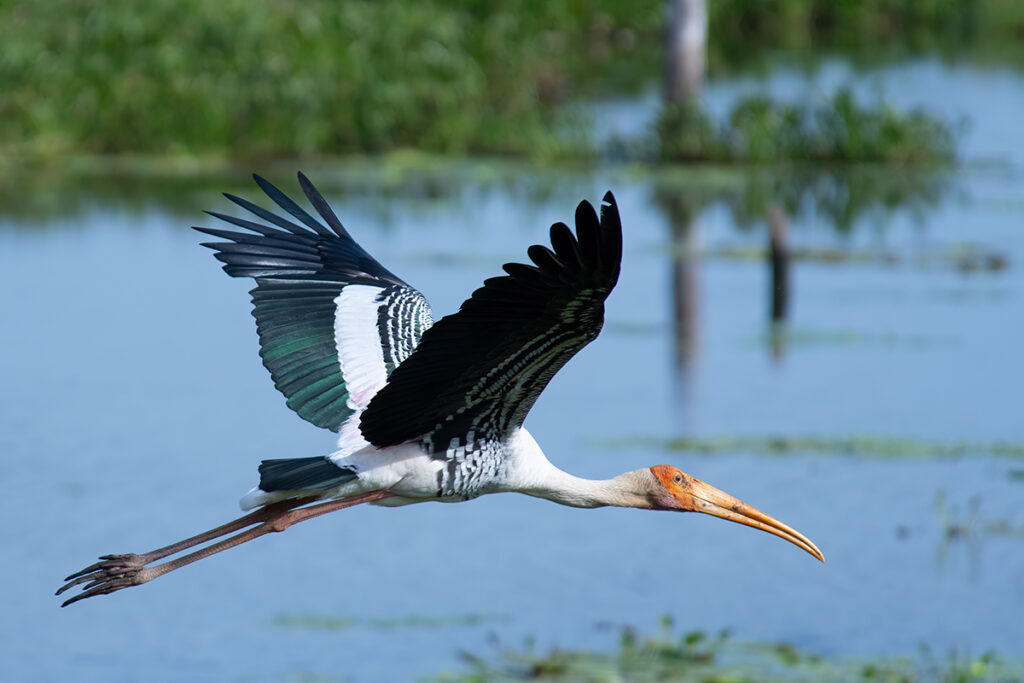
As we drove around the park, we saw Spotted deer, Barking deer, Sambar deer, Toque macaques and Grey langurs, Peacocks, bee-eaters, the endemic Jungle fowl, parakeets, and Malabar pied hornbill.
In late afternoon our sightings picked up again when we spotted a Sri Lankan elephant (a subspecies of the Asian elephant) feeding on aquatic vegetation while semi-submerged in one of the lakes, Water buffalo, several species of kingfishers and a hawk eagle having a drink at the edge of the lake.
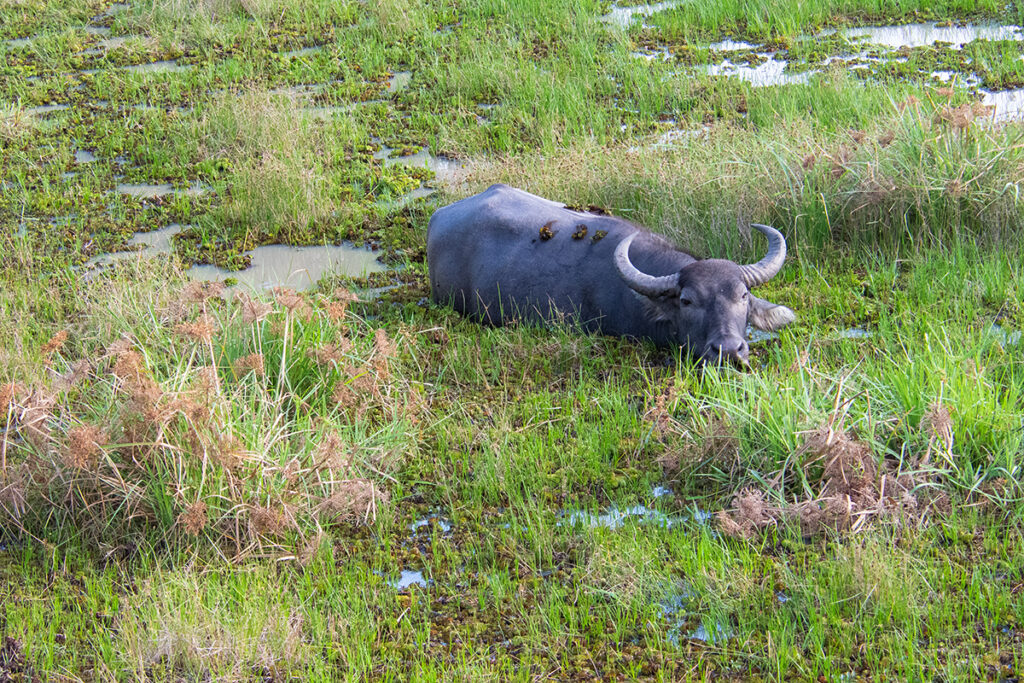
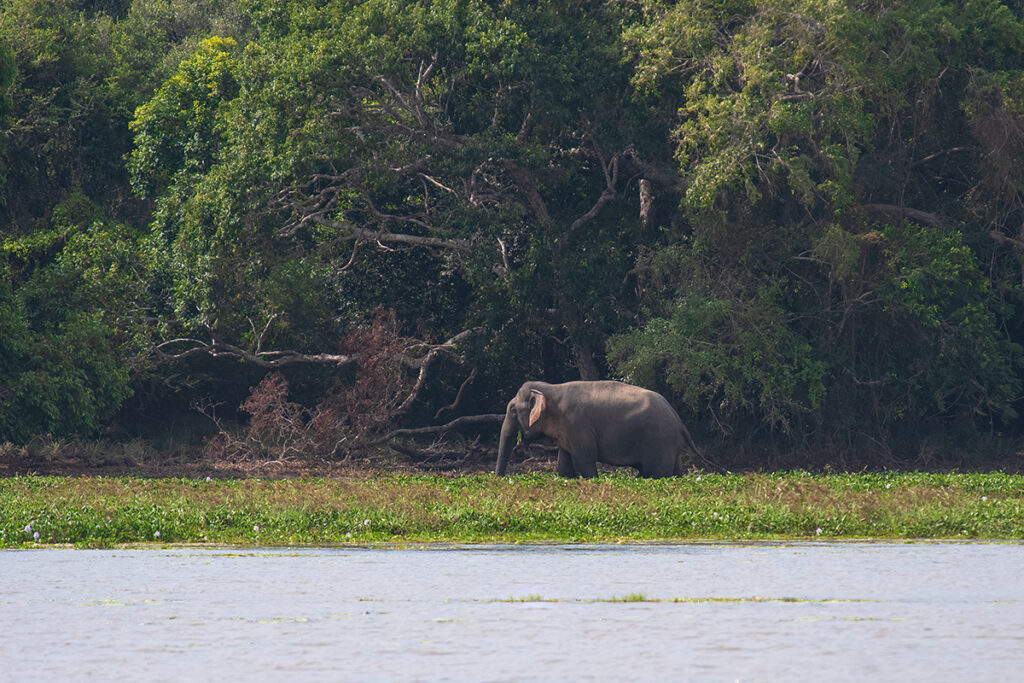
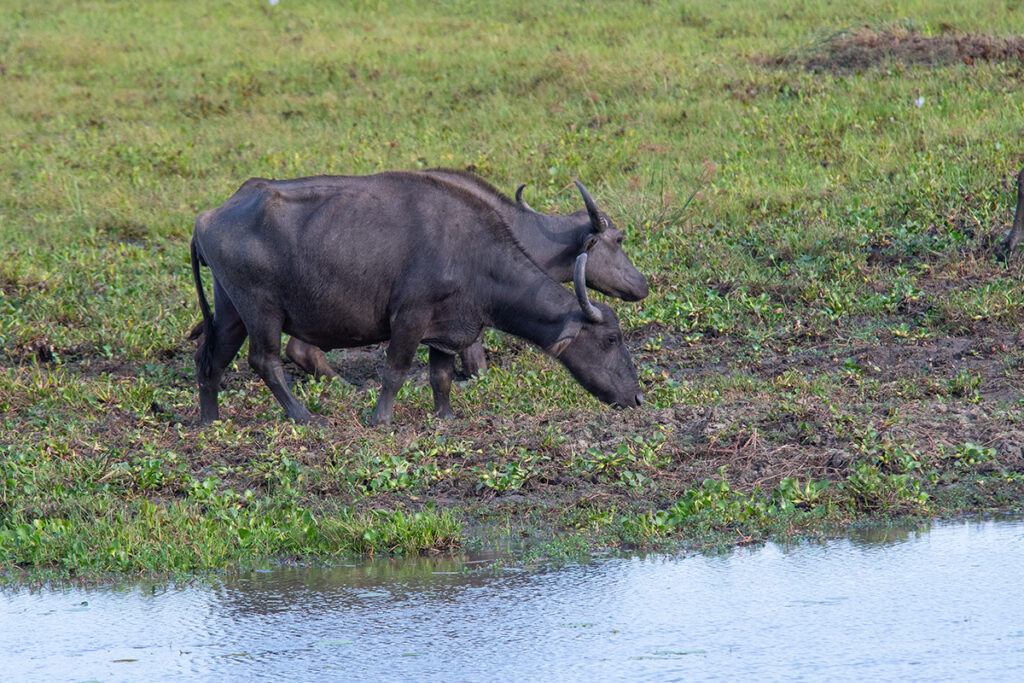
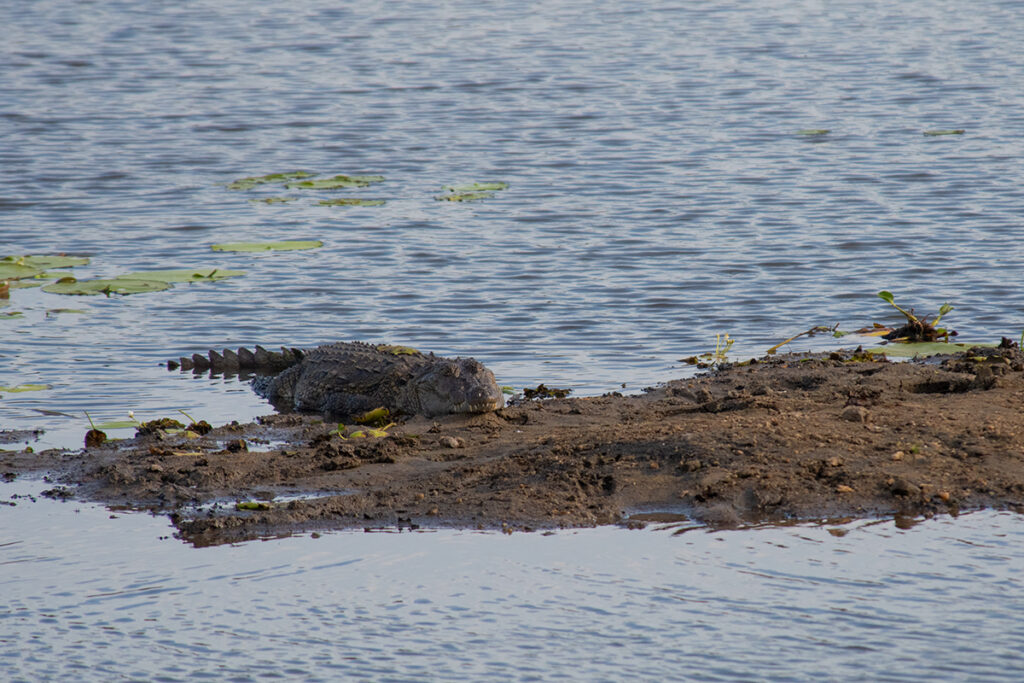
Driving back from the lake we watched 3 Golden Jackals trot across the road and then a female Grey Indian mongoose with a young running along the road and then scurrying off into the undergrowth.
Wild Cats
Since our main interest in Sri Lanka was the island’s wild cats, most nights we went on spotlighting drives in the surrounding countryside looking for the three small nocturnal felines: Rusty-spotted cat, Fishing cat, and Jungle cat.
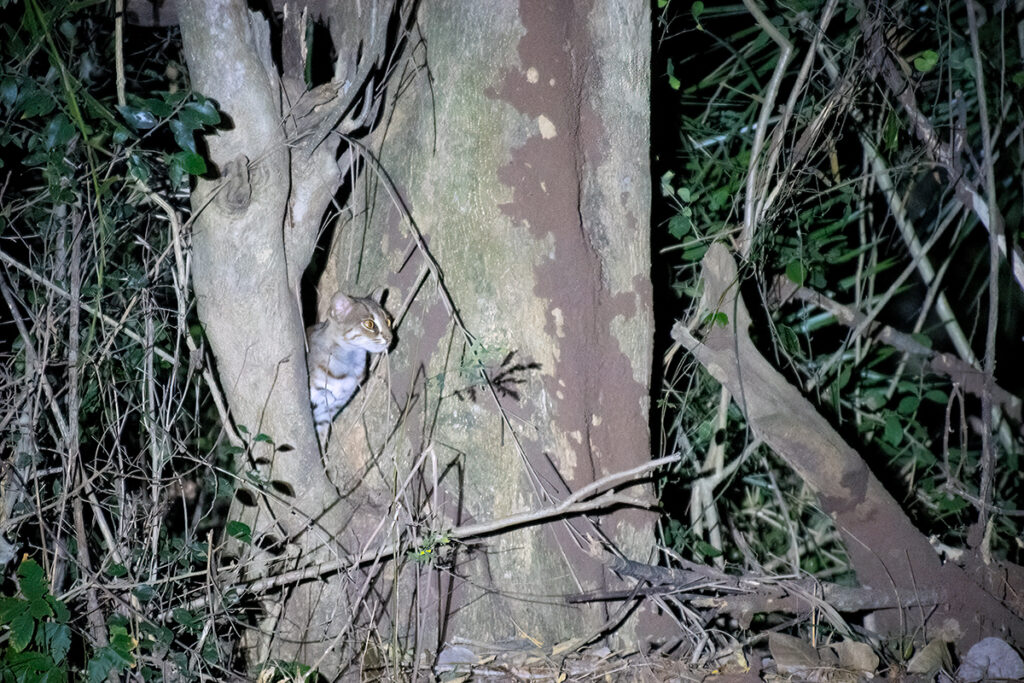
In Wilpattu we hit the jackpot straight away. Within minutes of our first night drive, we spotlight a Rusty-spotted cat on the Wilpattu Sanctuary road – the main road leading to the national park entrance.
The demure Rusty-spotted cat is the smallest feline in the world, weighing from 900 grams to 1.6 kilograms. It is native to India and Sri Lanka with some recent records from Nepal as well. Being so small and having a preference for forest habitat, it is not the easiest cat to spot. Finding it just off the main road, a kilometre from our homestay was very lucky.
We also saw it the following night on the opposite side of the road but it was a more distant sighting.
Next, we drove to Horuwila Lake hoping to find a Fishing cat and found one about 100 meters from the lake. It was snoozing next to the road and was not bothered by our arrival.
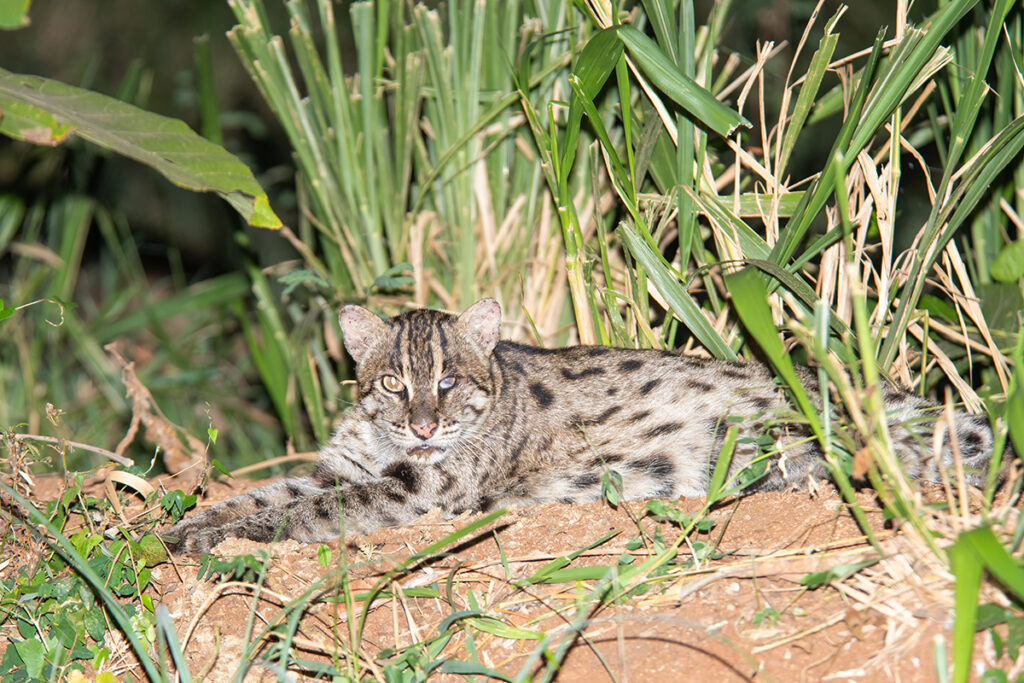
Fishing cats are also very unique cats – they catch fish for a living and have webbed feet and very sharp canine teeth to hold on to their slippery prey.
Overall, the Wilpattu area was very productive for us with two small nocturnal cats, leopards and all other species inside the national park.
How to get to Wilpattu
The easiest way to get to Wilpattu is by car, either a rental car or private transfer from any major city in Sri Lanka, or from Colombo airport.
To reach the park by public transport, make your way to Anuradhapura, just under 40 km from Wilpattu. Anuradhapura is connected by trains and buses to all major cities in Sri Lanka. From Anuradhapura, you can take either a bus, a tuk tuk or a taxi to the park.
Where to stay in Wilpattu
You can either stay in Anuradhapura and have an extra early start to your safari (it’s about 45 45-minute drive to the park), or you can stay near the park.
In Anuradhapura, if you are looking for an upmarket hotel, Aracchi Heritage is very elegant and has a beautiful swimming pool and room service.
If you prefer the authenticity of a homestay, Ceylonima Homestay is the most popular. It has a beautiful garden and the host will pick you up from the train station.
If, like me, you’d rather stay in nature than in the city, base yourself in the Wilpattu area near the National Park gate.
For comfort and convenience consider Ceylon Resort Wilpattu. This beautiful resort is located a stone’s throw from the park entrance and can arrange a full-day or half-day safari and transfer from either Anuradhapura or from Colombo.
For a mid-range option, there is the lovely Green Sapphire Holiday Resort which often has very good accommodation and safari packages. They can also organize transfers.
Sigiriya
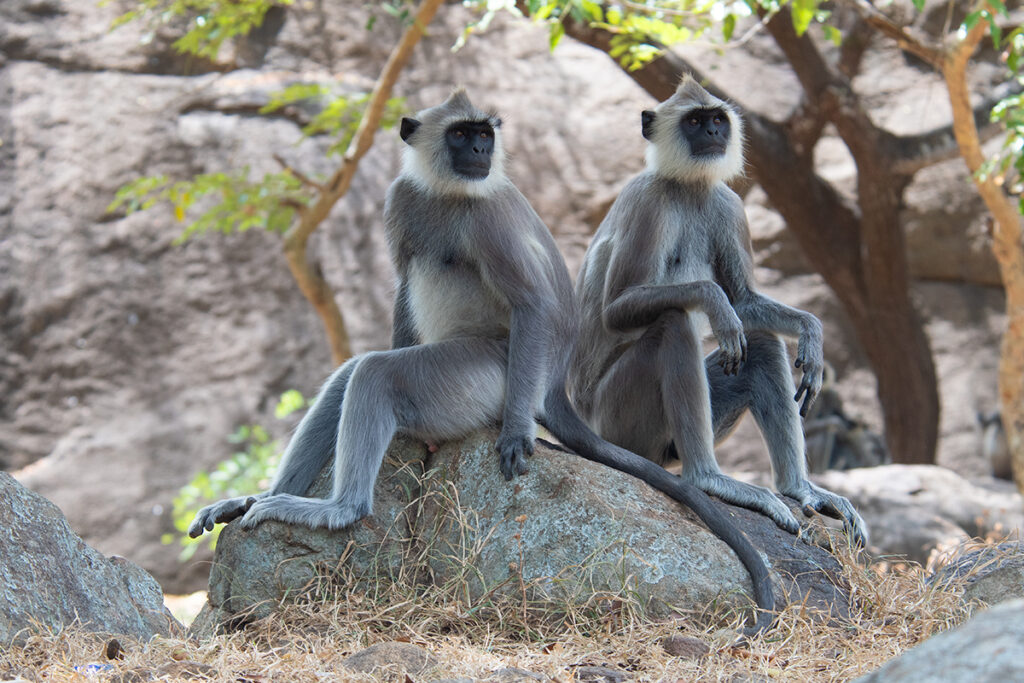
It may come as a surprise, but one of the best places to see Sri Lankan wildlife is Sigiriya, which is more of a cultural and historical destination.
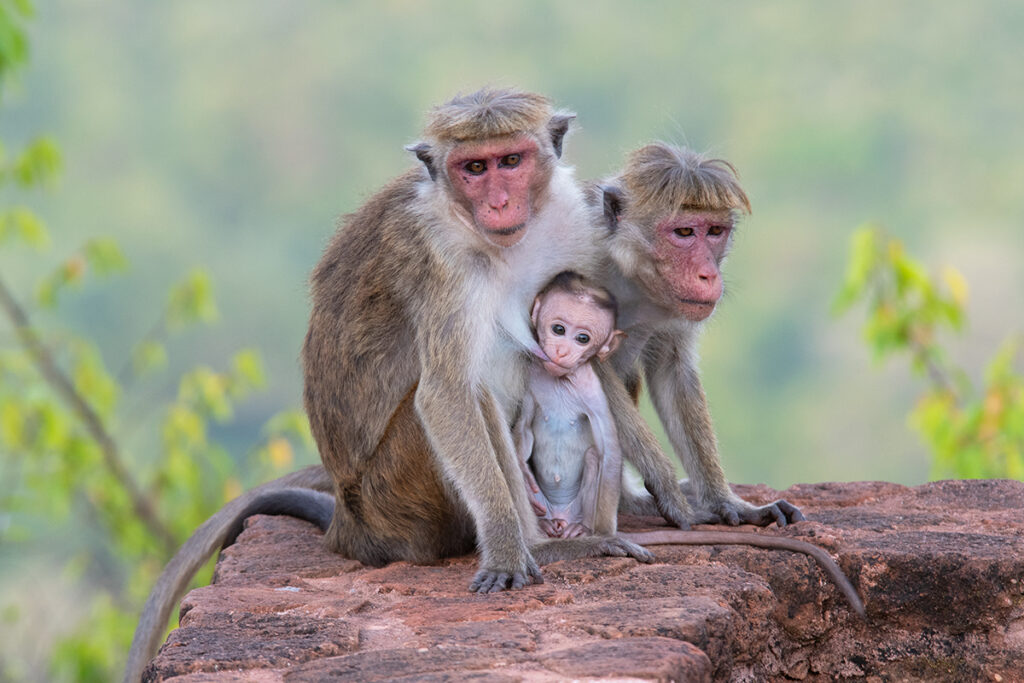
If you are planning to visit the Lion Rock at Sigiriya, and I highly recommend you do, you have a good chance to spot three species of monkeys: Toque macaques, Grey langurs, and Purple-faced leaf monkey, as well as two different squirrels: Grizzled Indian squirrel – the national animal of Sri Lanka and the tiny little Palm squirrel.
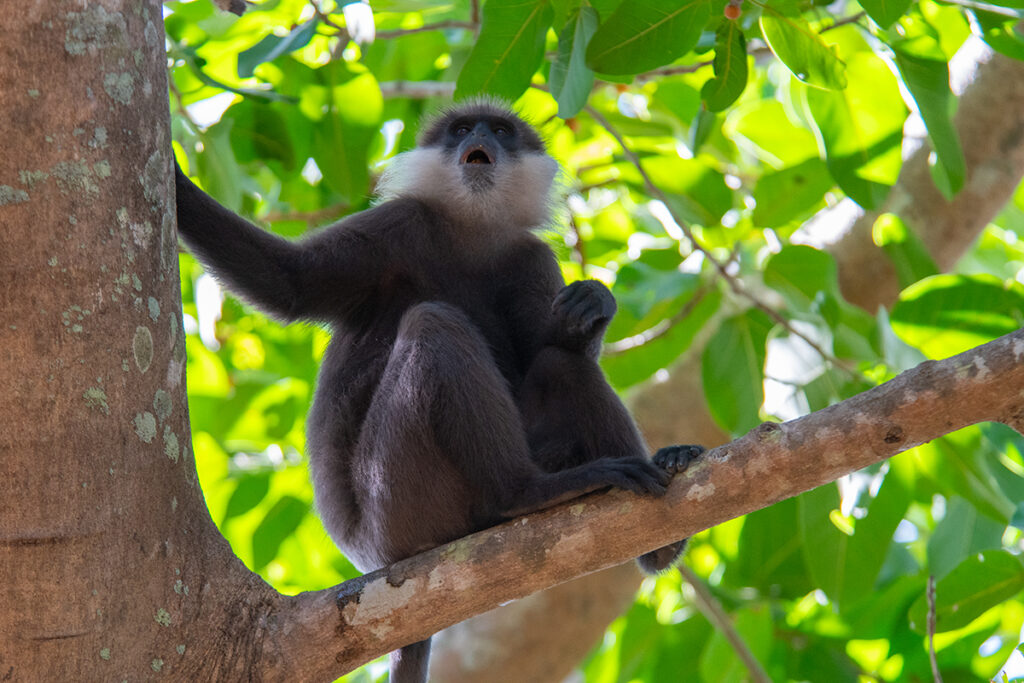
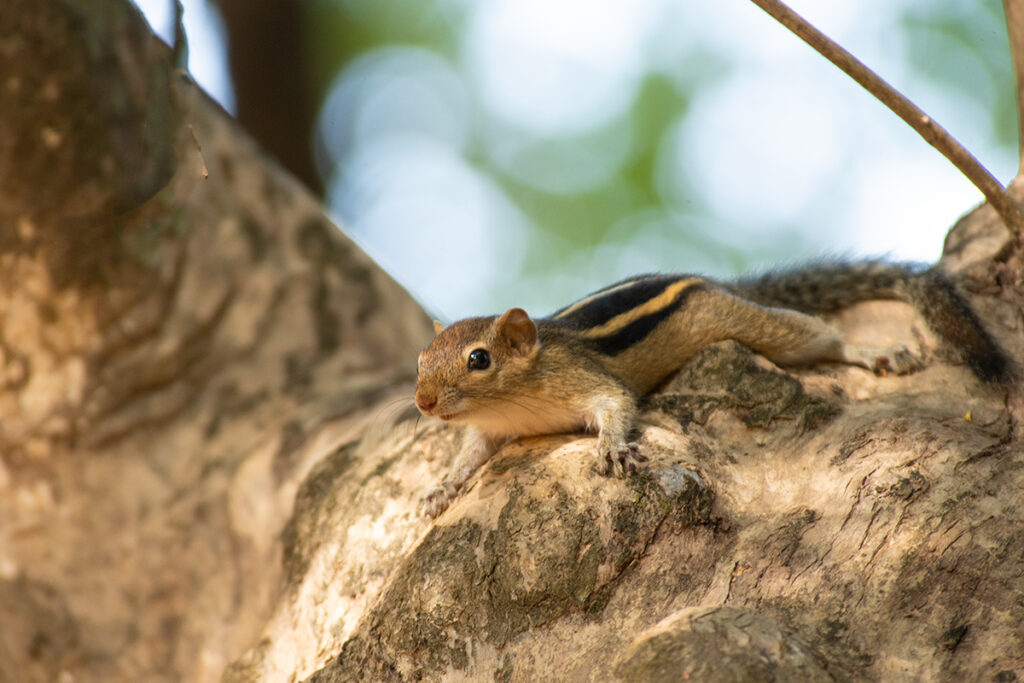
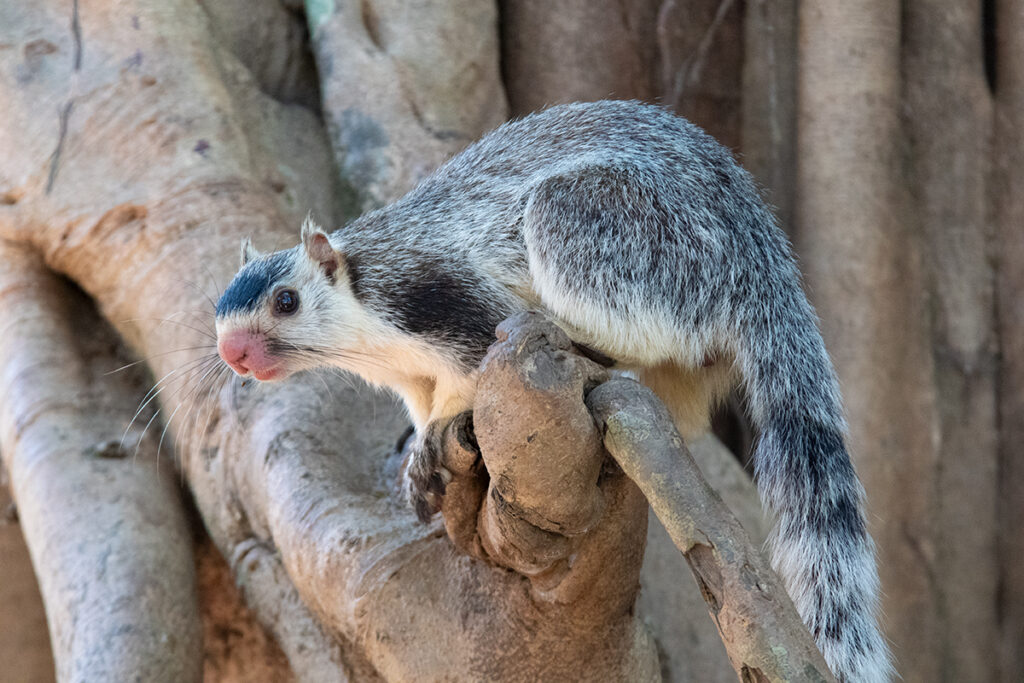
We also spent four nights driving around Sigiriya and spotted the fourth cat species – the Jungle cat, as well as a Fishing cat, a few Black-napped hares, Crested porcupines, a Ruddy mongoose, Barking deer, Spotted mouse deer, Palm civet, Ring-tailed civet, Marsh crocodiles in the Sigiriya moat, Brown fish owl, Indian long tail nightjar, Indian nightjar, and the adorable Gray slender loris.
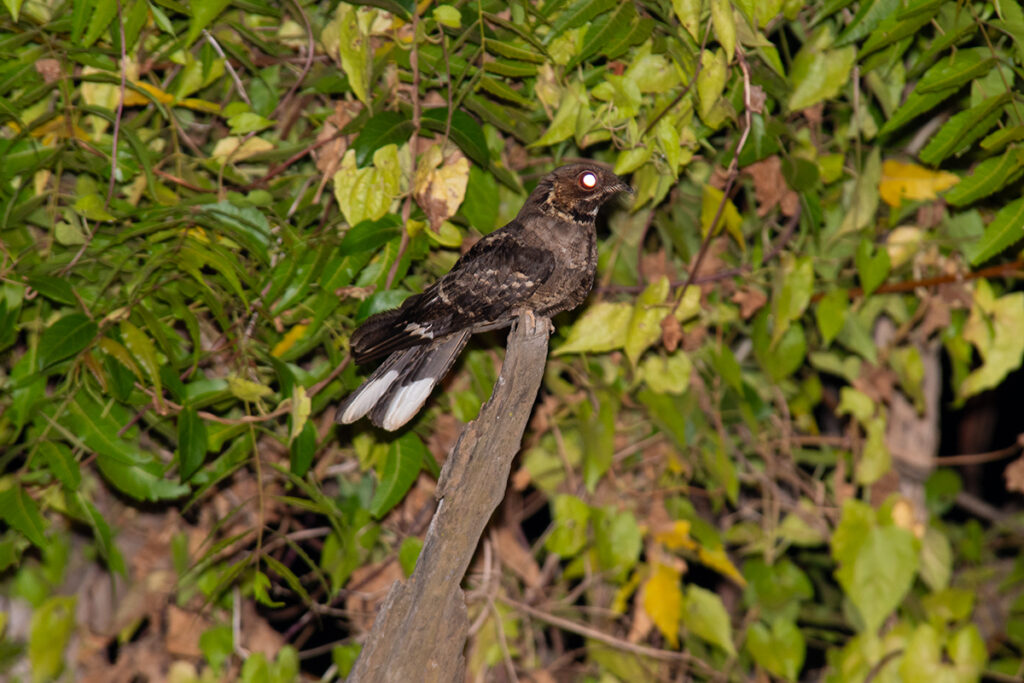
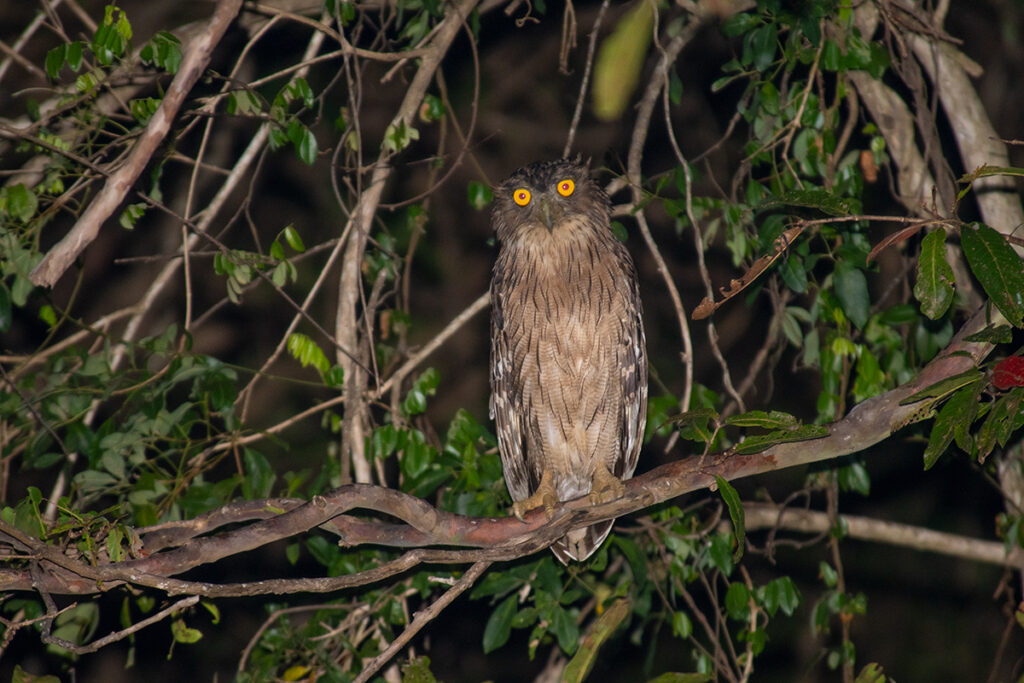
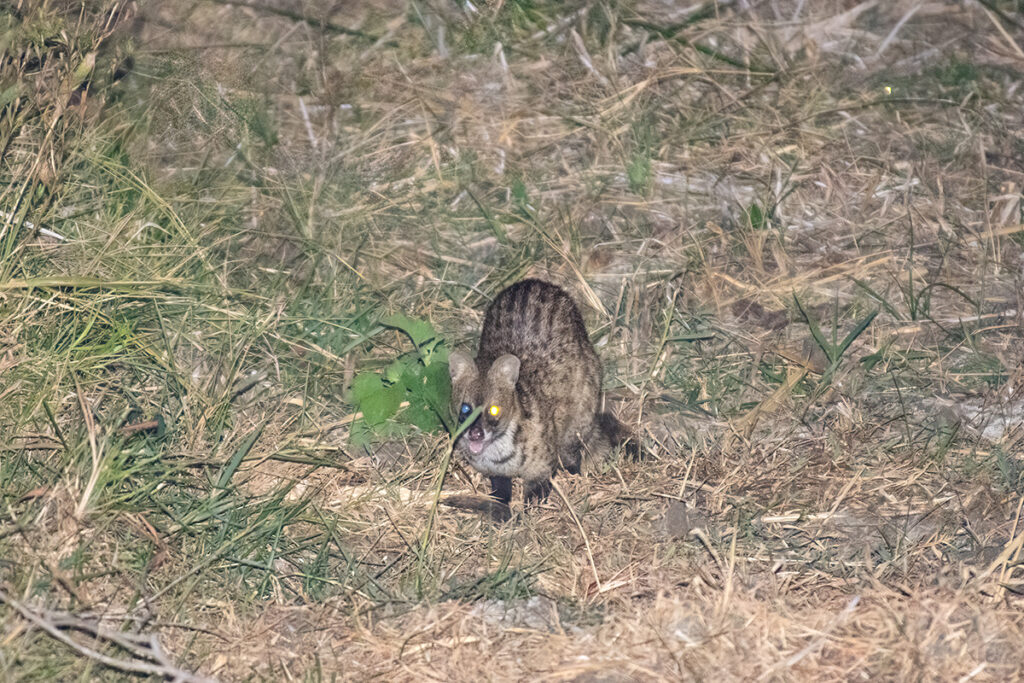
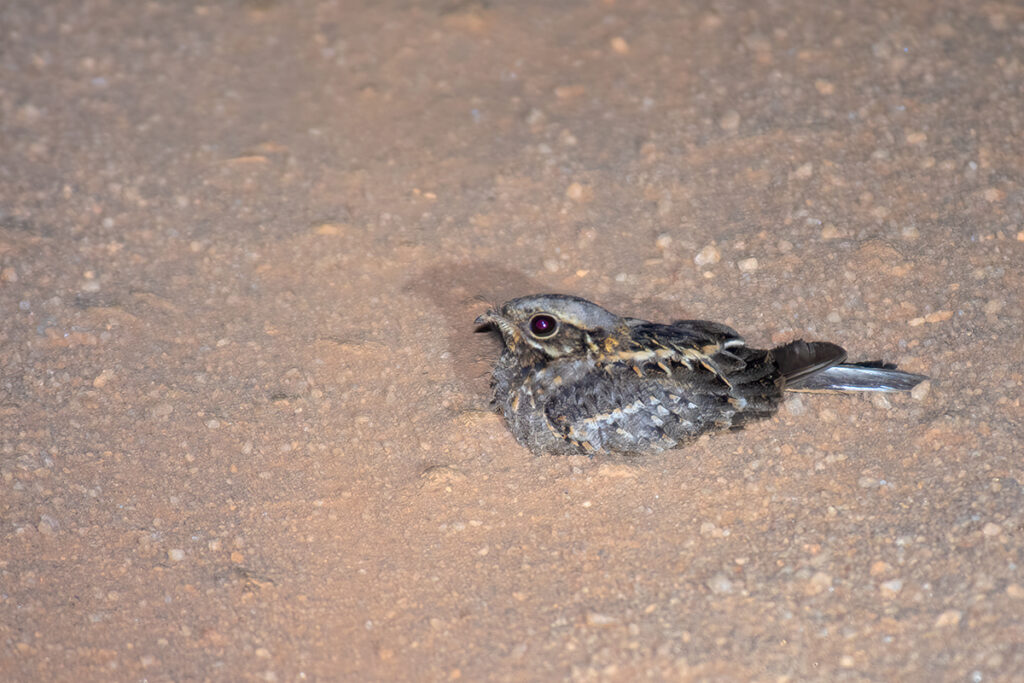
If you don’t have your own car and don’t wish to pay for a guided night drive, you can see the Grey slender loris on a guided nocturnal walk at The Back of Beyond Resort.
How to get to Sigiriya
As with many destinations in Sri Lanka, the easiest way to get to Sigiriya is by car, either by renting a car or booking a private transfer.
You can also fly to Sigiriya, but flights are expensive and you’ll have to travel to the international airport that’s an hour away from Colombo.
The most sensible public transport option is a train to Habarana and then a tuk-tuk or a taxi to Sigiriya. If travelling from Colombo, the train will take just over 3.5 hours.
Check train schedules and prices on 12GoAsia.
Where to stay in Sigiriya
If you are looking for a comfortable hotel within easy reach of Lion Rock, consider Il Frangipane. It has a lovely swimming pool and a garden. They can also arrange a transfer either from Habarana train station or from Colombo.
For something a little more down to earth, there are fabulous homestay options. I couldn’t recommend Lahiru Homestay highly enough. Lahiru is the most welcoming, attentive, good-natured, and well-connected host we met in Sri Lanka. He can organize virtually anything, even a safari in Wilpattu National Park hundreds of kilometres away.
Popham arboretum
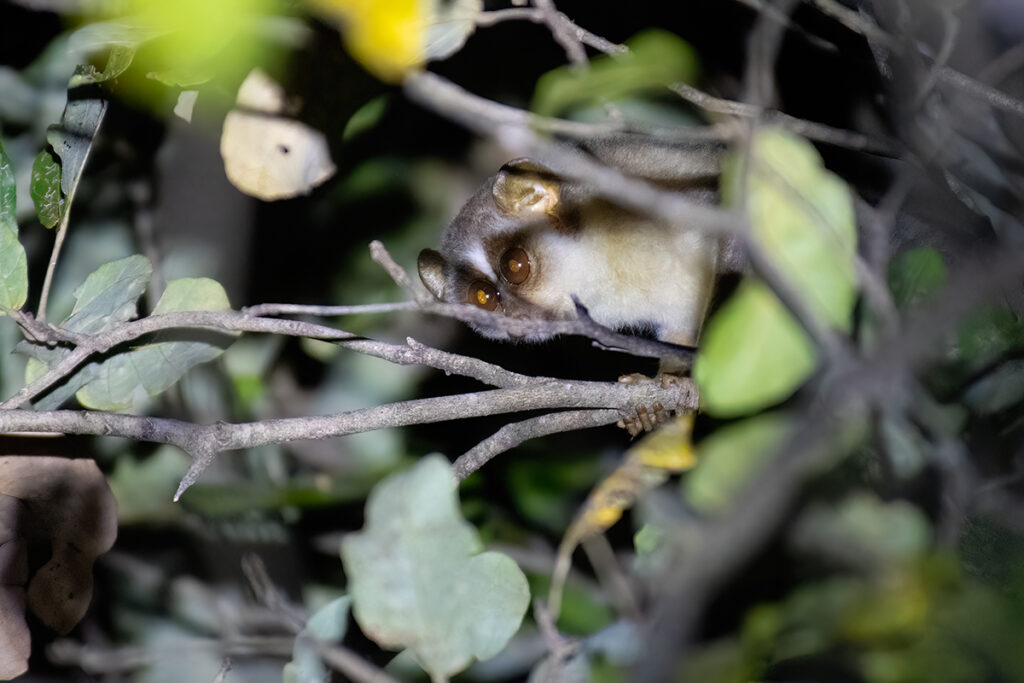
Another good place to see the Gray slender loris is Popham Arboretum located near Dambulla Caves, about 20km from Sigiriya.
The guided nocturnal walk at the arboretum starts around 6 pm and apart from the loris, the caretaker will show you some False vampire bats roosting in a stone tower next to the visitor centre, Horseshoe bats roosting in a barn nearby and possibly mouse deer and spotted deer.
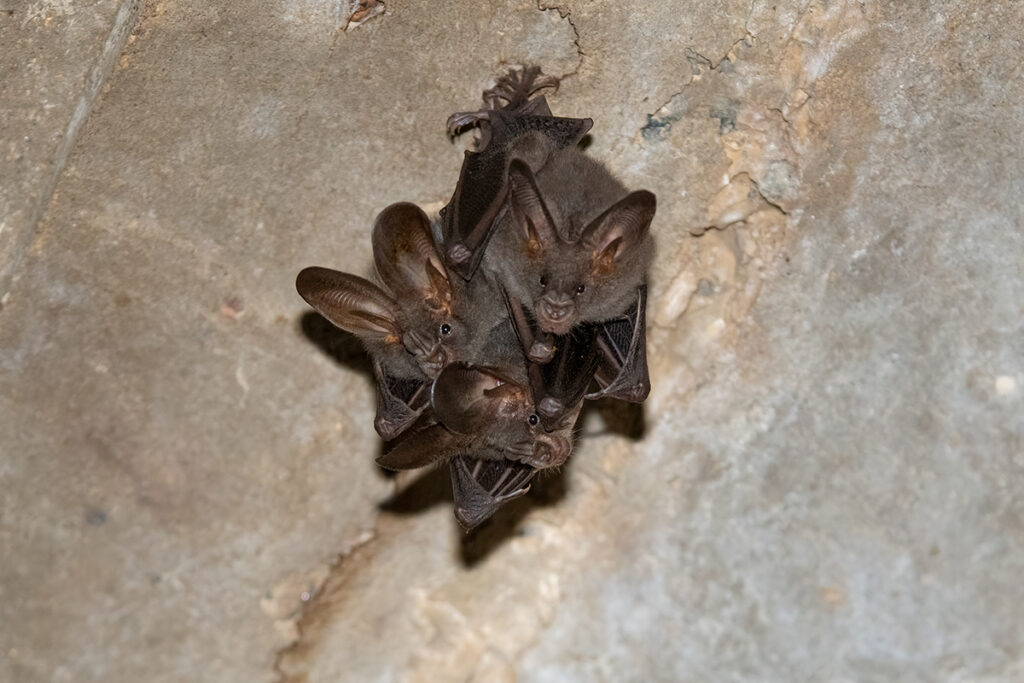
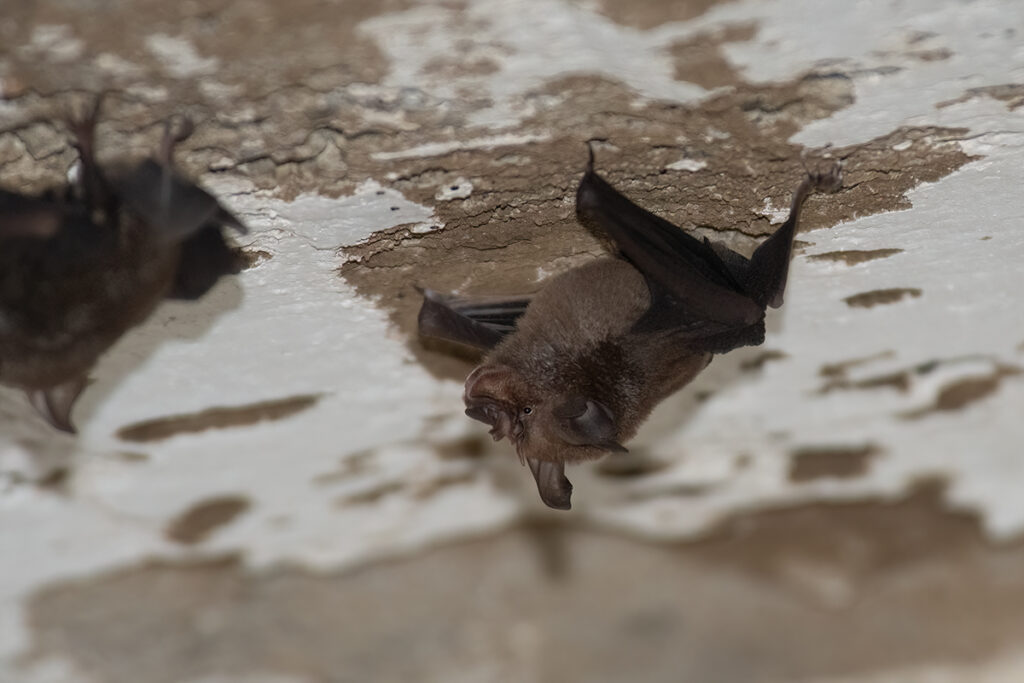
You can visit the arboretum before 6 pm to take some of the walking trail and spot some birds and reptiles. The endemic Ceylon jungle fowl are particularly easy to see here.
Kadulla & Minneriya National Parks
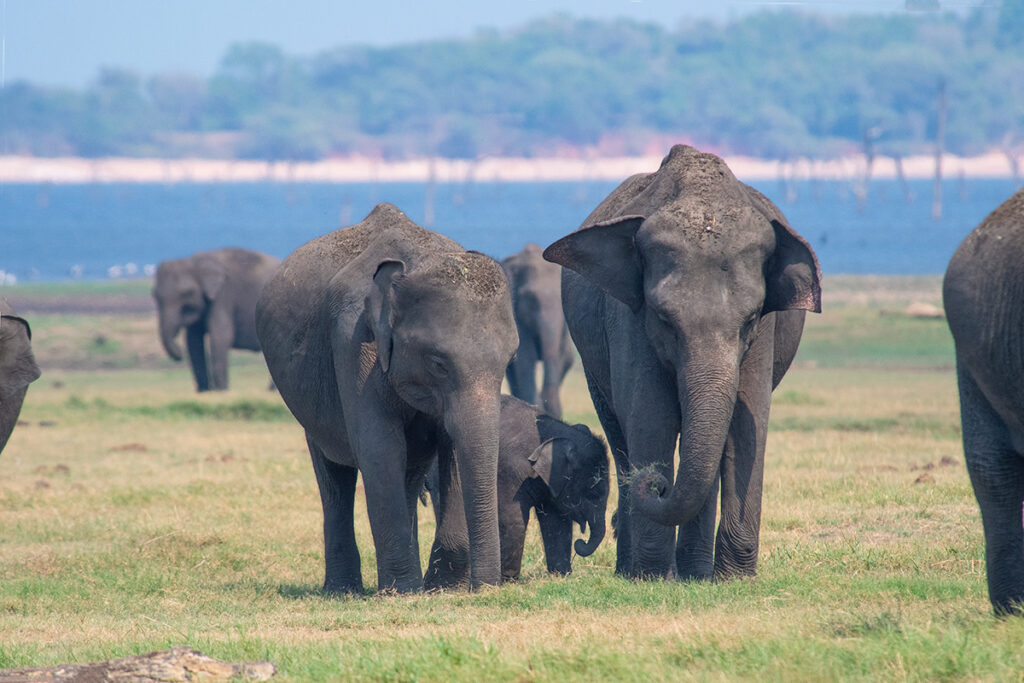
Sigiriya lies within easy reach of two very special national parks: Minneriya and Kaudulla. Each year, during the dry season (July to November) when most water sources dry out, hundreds of elephants descend on the shores of ancient reservoirs now protected by these two national parks. This epic migration is called “The Gathering” and it represents the highest concentration of elephants on earth.
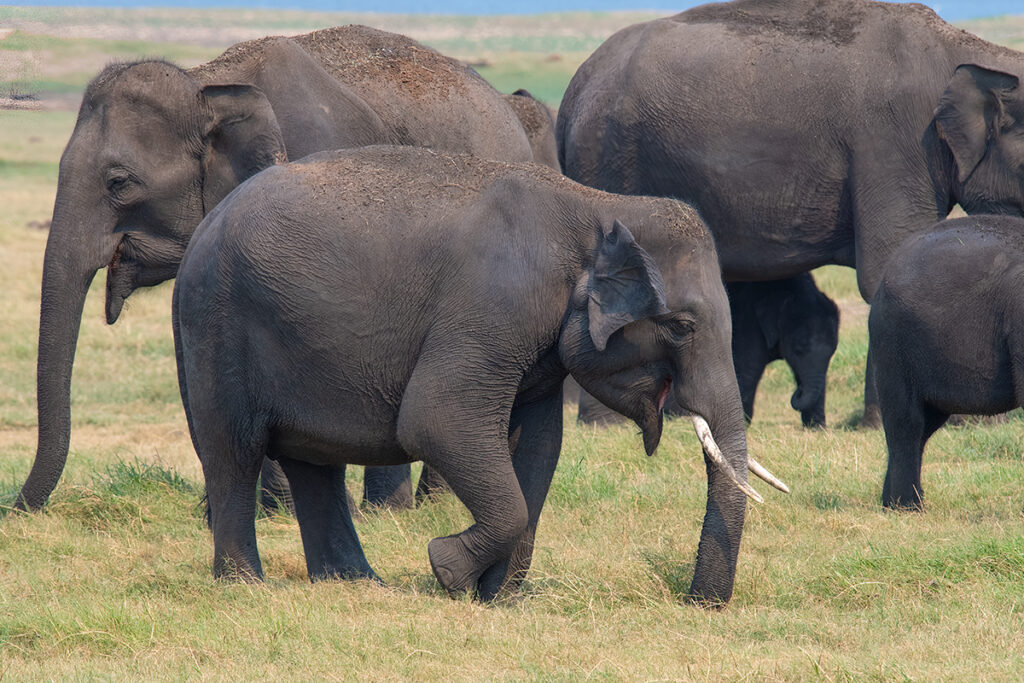
Not only do the reservoirs in Minneriya and Kaudulla National Parks provide an ample supply of fresh water, but the receding waters of the reservoirs leave behind a carpet of fresh juicy grass for elephants to feast on.
That’s why the elephants have been making this trip for centuries, coming from across the central region of Sri Lanka to eat, drink, bathe, mate and socialize. Today, you can hundreds of elephants gathered on the shore of the reservoirs.
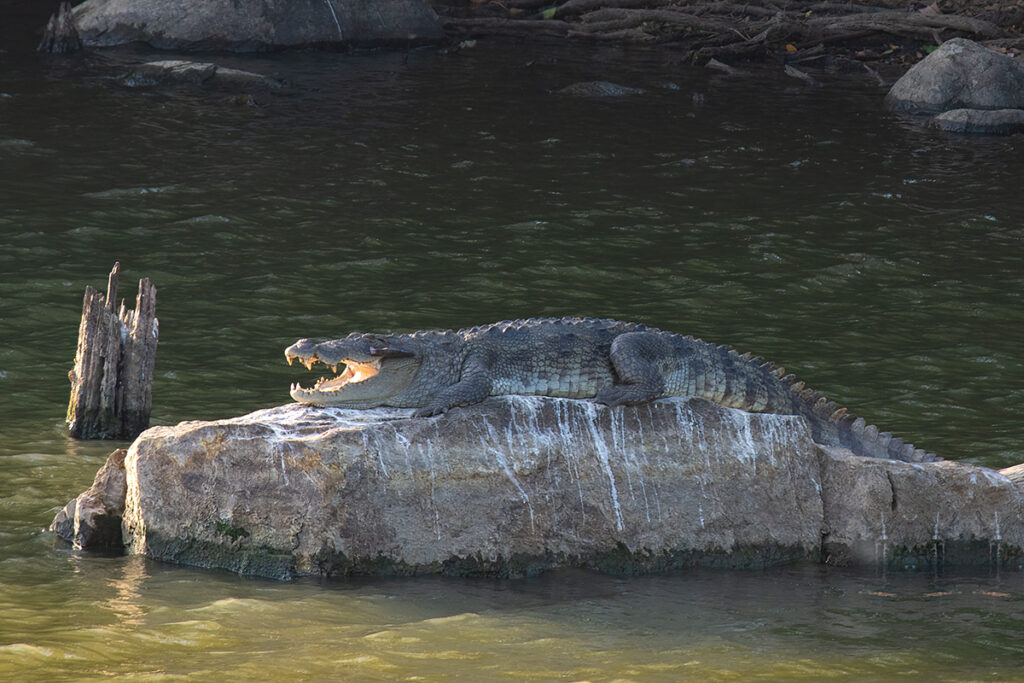
The elephants move between the reservoirs throughout the season, so no one knows in advance which of the parks will have the highest number of elephants at any given point. But whichever park you choose, you’ll see plenty of elephants.
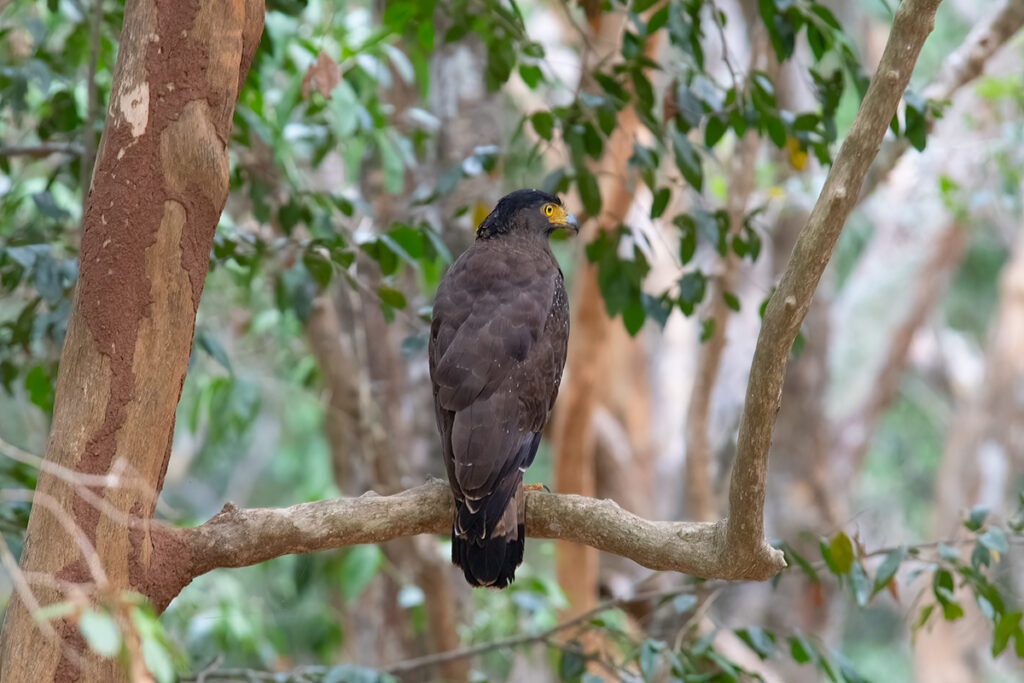
However, if you want to see the gathering at its best, wait until you get to Sigiriya and ask either the local tour operators or your accommodation provider where the gathering is currently at. We stayed at Lahiru Homestay (in Sigiriya), and Lahiru even helped us coordinate the safari with two other people so we could share the cost of the jeep.
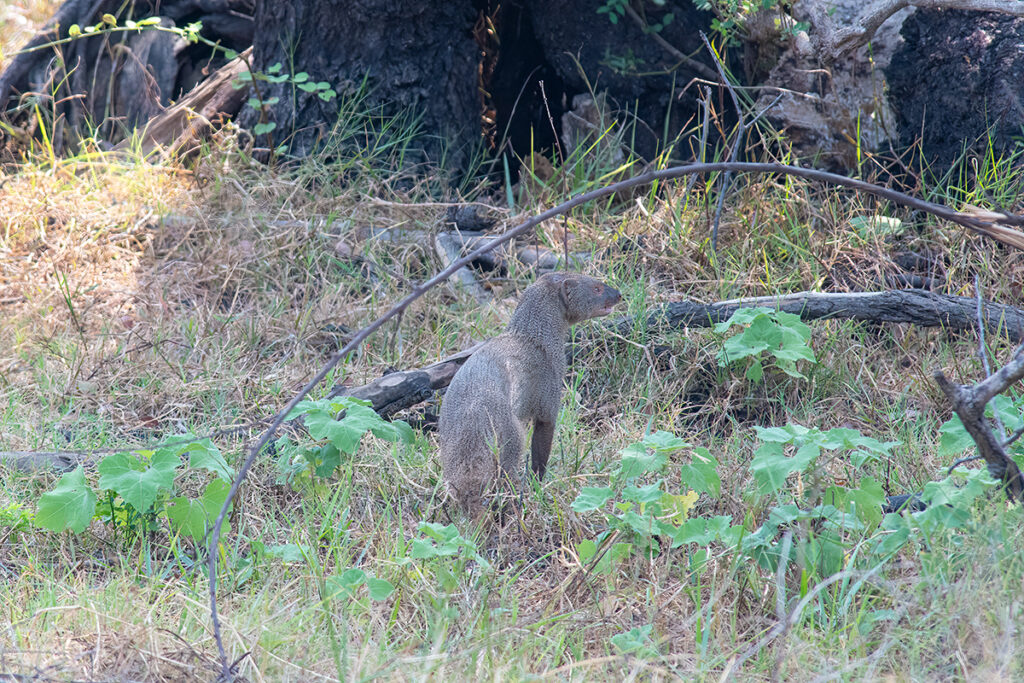
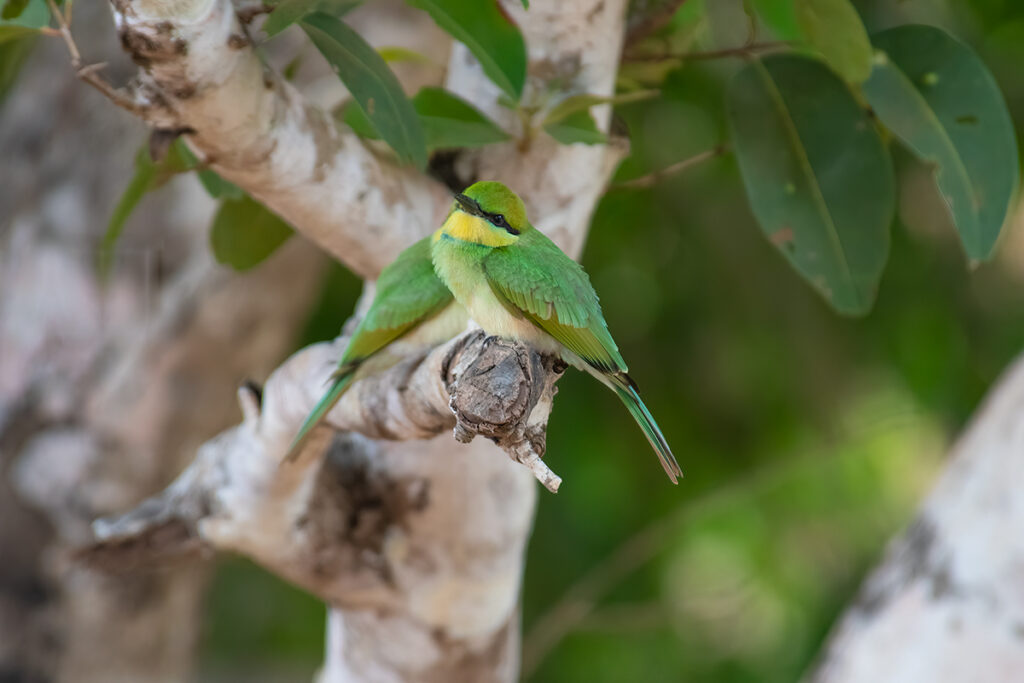
Safari to Minneriya or Kaudulla are half-day adventures (in the morning or afternoon) and the cost for the jeep is around 55,000 rupees (approx USD $ 170). This includes the $30 national park entry fee, which each person has to pay, but the rest of the cost can be shared by up to 6 people and everyone will still have a ‘window’ seat.
Mirissa
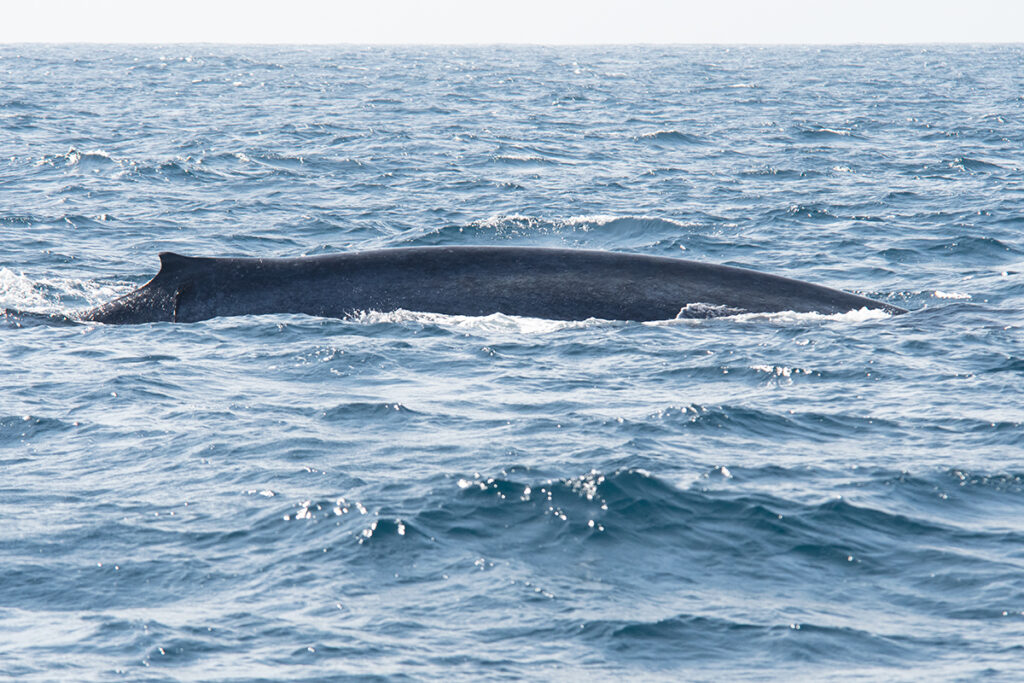
Mirissa is a small port town on the island’s south coast and is probably the best place in the world to see Blue whales – the largest creatures to have ever lived on Earth. At 180 tons, the Blue whale is bigger than the largest dinosaur. So, of all the things to do in Mirissa, whale watching is a must.
There are several different whale-watching tour operators and unfortunately, most of them are entirely unethical and would chase a whale for hours approaching much closer than the international whale-watching guidelines allow.
We’ve done our research before the trip and following recommendations from other wildlife watchers, we booked a tour with Raja and the Whales – the best ethical whale-watching company in Mirissa.
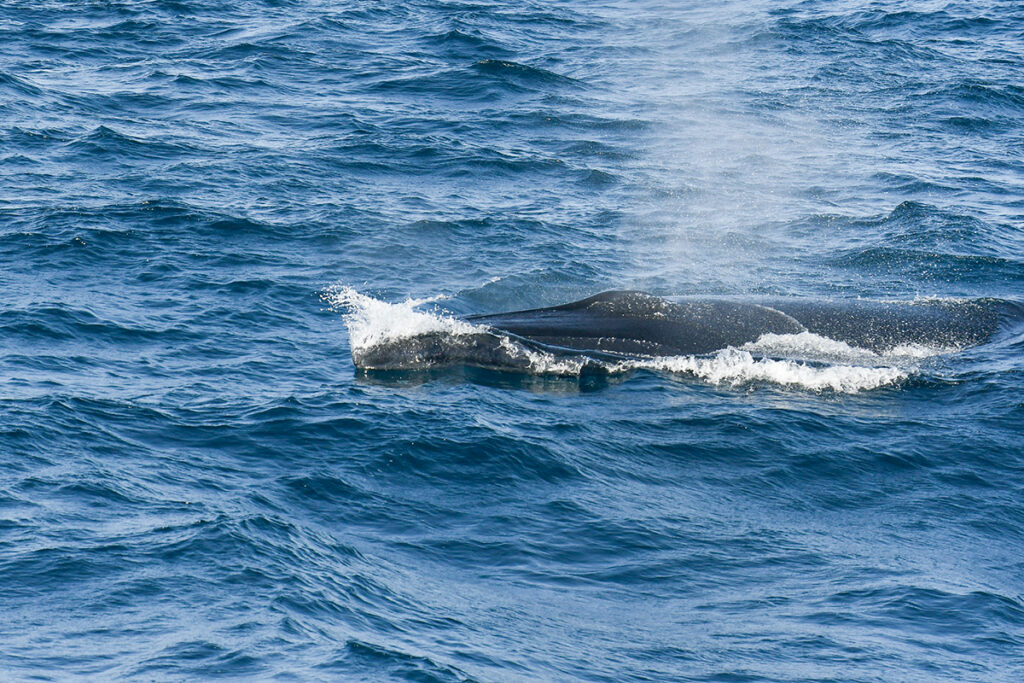
The tour with Raja and the whales costs around USD $120 and it will last as long as it takes to make the best possible effort to find the whales. We were lucky to spot a Fin whale female with a calf, before finding the Blue whale. Seeing the largest and the second largest living creatures in one morning.
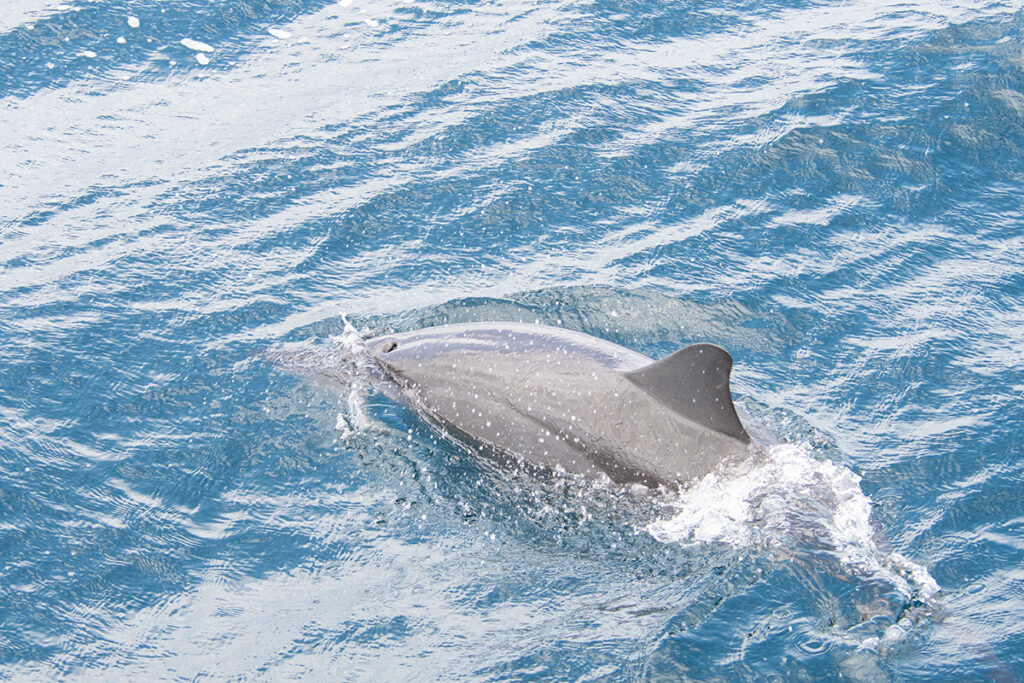
Plus, on the way back into the harbour we were joined by a pod of Spinner dolphins – the most acrobatic dolphins out there.
So the whale watching season in Mirissa runs from November until the end of April/early May and from August until October.
Tip: In Mirissa, the whale-watching season runs from November to early May and then from August to October. But if you are visiting Sri Lanka between May and July, you can see whales in Trincomalee, on the east coast. Sri Lanka has two monsoon seasons and when the sea is too rough in the south, it is perfectly sailable in the east.
How to get to Mirissa
The best way to get to Mirissa from Colombo is by catching a train either to Weligama or Matara. The journey takes just over 3 hours. From either train station, it is a short tuk-tuk ride to Mirissa.
Alternatively, you can book a private transfer from Colombo Airport to Mirissa for about USD $75.
Where to Stay in Mirissa
If you are looking to wrap yourself in comfort and luxury, Beach Mirissa Hotel has a gorgeous pool and elegant rooms that feature balconies with ocean views.
In mid-range, Tiki Bay Mirissa is just a few steps from the beach and has simple but comfortable rooms and serves delicious pancakes for breakfast.
If you are travelling on a budget, Sun Hopes is very affordable, perfectly comfortable and located within a short walk from Coconut Tree Hill, Turtle Beach and Mirissa Beach.
Kitulgala
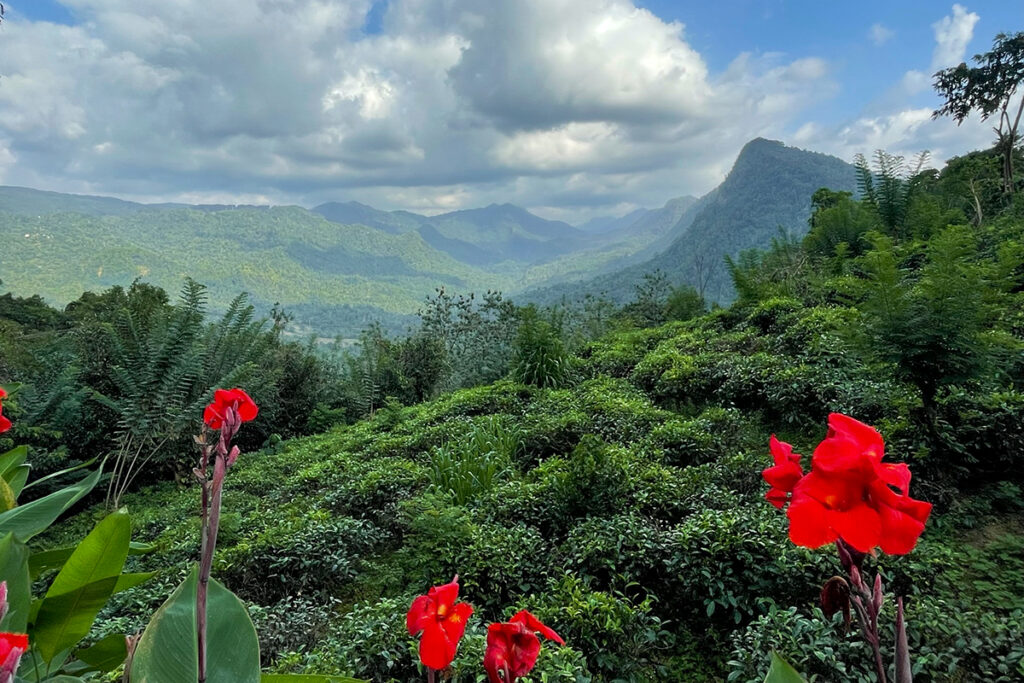
According to the rainfall, Sri Lanka can be divided into three distinct climate zones; wet zone, dry zone, and intermediate zone. Most of the famous national parks and most of the areas we visited so far are located in the dry zone.
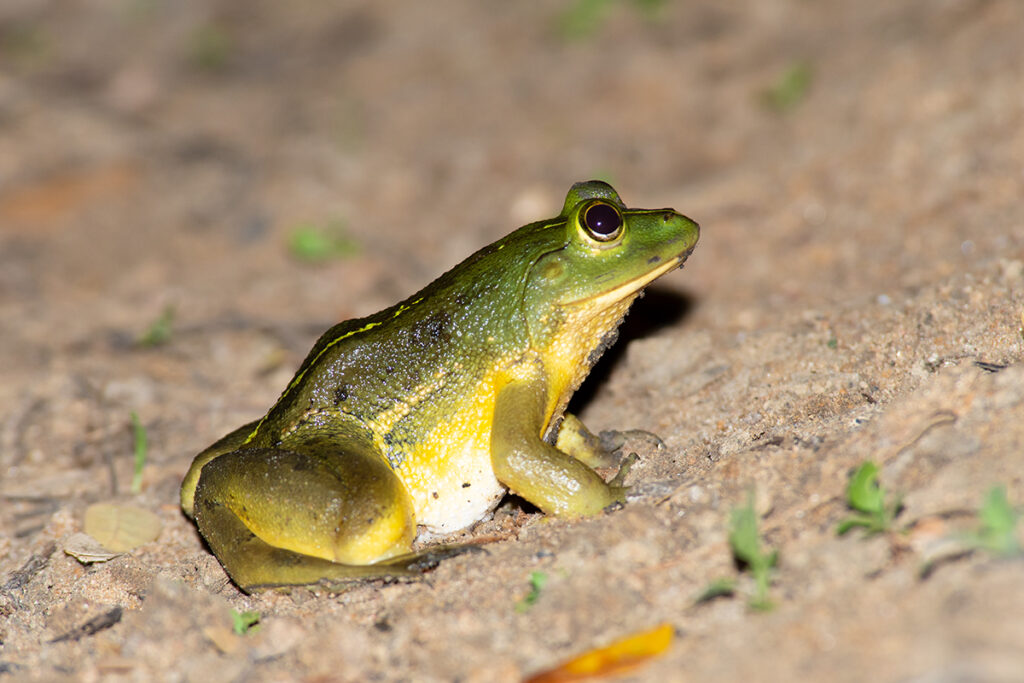
The wet zone, located in the southwest of the island is home to several species of wildlife that can only be found here, including the Red slender loris, golden palm civet and the endemic Serendib Scopes owl.
Some of the good places to visit in the wet zone are Horton Plains National Park and Sinharaja Sanctuary. Or to get away from the crowds, Kitulgala perched in the mountains around Kelani River, 87 km east of Colombo is a nice spot.
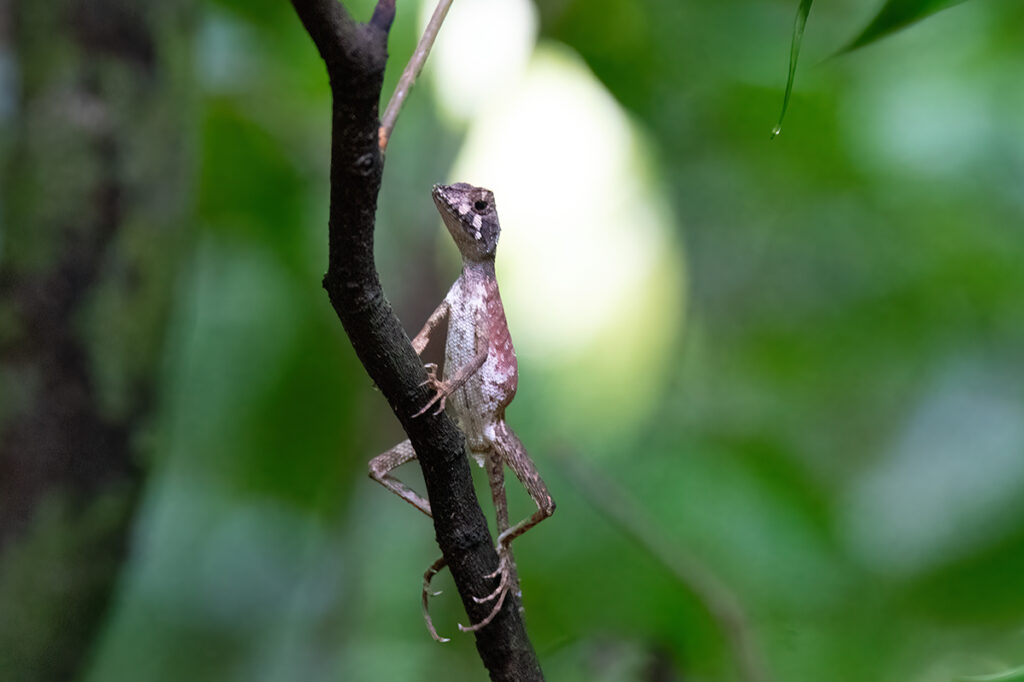
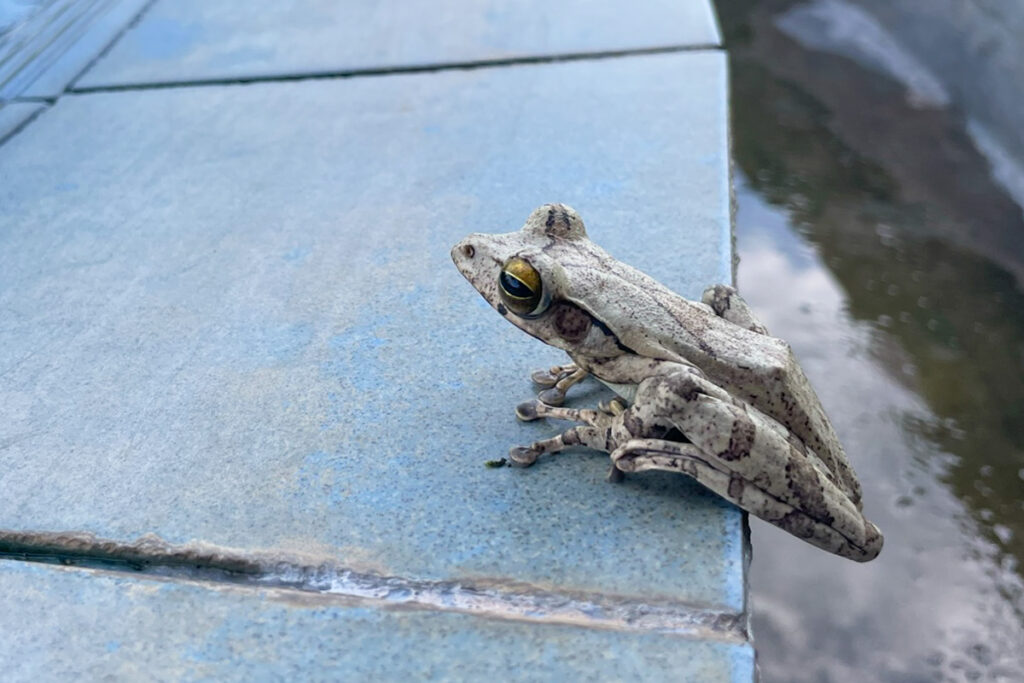
We missed out on the loris and the golden civet in Kitulgala but enjoyed swimming with several species of endemic fishes in the plunge pool of the Lenthiri Ella waterfall in Makandawa Conservation Reserve. The rainforest in Makandawa is incredibly lush.
How to get to Kitulgala
Kitulgala is a bit tricky to get to on public transport. You can catch a bus to Nittambuwa from Colombo Bastian Mawatha Bus Terminal and then a taxi for the remaining 55km to Kitulgala.
Where to stay in Kitulgala
If you have your own car and can stay a couple of kilometres out of town, Hotel Breeta’s Garden is a bit of a hidden wildlife-watching gem. We found this out too late, but there is an Indian pangolin living on the property. The hotel manager who at first thought that looking for animals at night was a very odd thing to do, showed us the pangolin’s burrow on the morning of our departure.
The hotel is a bit odd with more dining tables than rooms, but the rooms have balconies with superb mountain views and there is a gorgeous pool surrounded by the towering hill.
Final Thoughts on Sri Lankan safari
In the two weeks of driving around Sri Lanka in search of the island’s wildlife, we’ve encountered 37 mammal species, including all four species of Sri Lankan wild cats.
My favourite locations were Wilpattu National Park (and its surroundings) and the coastal waters around Mirissa. Hiking in the rainforest in Kitulgala was memorable because it was so different from every other place we visited in Sri Lanka. Although in retrospect, I would’ve preferred to brave the crowds in Horton Plains National Park.
More on Exploring Sri Lanka
- Wilpattu National Park Safari Guide, Sri Lanka 2024
- Things to Do in Sigiriya for Nature Lovers – Wild Sri Lanka
- Best Ethical Whale Watching in Mirissa: Tour Review
- Guide to Planning Sri Lankan Safari
- 17 Things to Do in Trincomalee in 2023: Beaches, Whales & Temples
- 11 Things to do in Mirissa: Whales, Beaches, and Coconut Palm Trees

